A Short History of the Marist Brothers
Part 4 of 4
If we Marists can pride ourselves on our progress and achievements in the middle of last century, I don’t think we can do as much in the field of inter-Marist relations. Our congregations have, for the most part, gone their separate ways, with little contact except at the levels of leadership and local missionary activities and the occasional celebration. No one is sure whom the pioneer missionary brothers belong to, and the fact that Champagnat was a priest of the Society of Mary seems ignored by most of the brothers and forgotten by most of the fathers. Fortunately, the appeal by the Vatican Council to religious congregations to go back to their origins is beginning to encourage the research which will remedy this situation.
And now 50 years later, in 1999, we come to Champagnat’s canonisation. And what a difference we find! The formation centres have been closed and sold. The network of primary schools has been reduced to one at Napier. Many brothers have left the congregation and very few candidates are offering for the novitiate. This situation is largely a result of the Second Vatican Council and, in New Zealand, the integration of Catholic schools into the state system, in combination with sweeping social changes. The Council, in formulating a new vision of Church, has empowered the laity and challenged religious to find new models of religious life. Lay people have been encouraged to take an active part in areas of Church life formerly the preserve of clergy and religious. In fact, this has become a necessity in countries such as New Zealand, where the rising cost of education and the decline in numbers of religious compelled the hierarchy to enter into partnership with the state. During the 1980s, therefore, we saw a series of closures, mergers and new foundations as Church schools were integrated into the state system. And we also saw what Rory Sweetman described as “the flight of the religious orders from teaching”.
One factor not anticipated by the hierarchy and the Catholic community generally, is that one of the effects of Vatican II has been to move the focus of religious beyond their traditional apostolates. Integration, for example, has given New Zealand religious the opportunity to move out of the classroom and formal education and concentrate on specialised ministries, or respond to the needs of places or groups outside the mainstream. In the first instance, the brothers set up a school retreat team based at Tuakau, opened an alternative education centre at Glenfield, and introduced the REMAR youth movement into the schools. In the second, they found openings in the poorer urban areas such as Ōtara, and impoverished rural regions such as Northland, where small communities in Panguru, Kawakawa and Kaitaia became involved in both formal and informal education, and youth and social work. Some of these ventures were relatively short-lived, while others continue.
Similar developments took place in the Pacific, with foundations in the remoter areas of Fiji at Napuka and Savarekareka, both in collaboration with other congregations, and in Samoa at Palauli.
Alternative education institutions were later opened in both countries, at Vatuwaqa in Suva, and at Palauli. A Pacific novitiate was opened in 1971 at Lomeri in Fiji to serve the New Zealand and Australian provinces, taking in candidates from Fiji, Samoa, Papua-New Guinea, the Solomon Islands, Tonga, Kiribati, Vanuatu, and even India. It has produced the men who are the leaders and formators of today’s Districts of the Pacific and Melanesia. Inspired by the Council’s
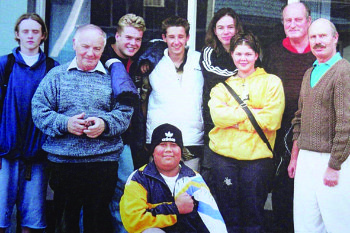
Brs Romuald, left, Henry and Martin with the first students at the Marist Alternative Education Centre, Glenfield
re-emphasis on the centrality of the missions, the province also accepted invitations to found communities in two new places in the Pacific, Tonga in 1978 (strictly speaking, a return after over 100 years), and Kiribati, north of the equator, in 1984. Although a shortage of manpower obliged us later to leave Tonga again, individual brothers responded to the congregation’s millennial ‘ad gentes’ project by going to work in the Philippines, Thailand, Vietnam, and Africa. We may see here something of a renewal of that international spirit characteristic of the early communities of the region.
And we are aware, too, of a renewed and greater understanding of our origins and union as members of a wider family of Mary, another fruit of Vatican II. This received memorable expression in our country at the end of the century in the creation of the Marist Pastoral Centre at Marcellin Hall, when fathers, sisters and brothers formed a team to help with religious and pastoral renewal in New Zealand, Australia and the Pacific Islands. Although you will find no trace today of the physical buildings of Marcellin Hall, there are many priests, religious and lay people who are conscious in their own lives of the presence of the spiritual edifice it helped build. Further signs of its expression are evident in events such as our combined gatherings. This is, I consider, a source of strength and inspiration for us as we look towards an as yet uncertain future.
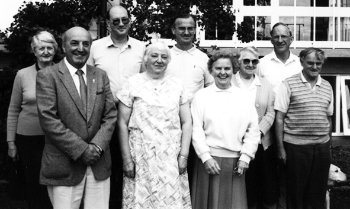
Marist Pastoral Institute Team, Marcellin Hall, 1990: Left to right: Oline Nielsen RSJ, Ezio Blasoni SM (Director), David Kennerley SM, Mary McKenna RSJ, Kieran Fenn FMS, Margaret Arrowsmith SMSM, Felicitas Cahill SMSM, Sean Hanaray FMS, Basil Ward FMS
This article is adapted from a paper delivered in Auckland in 2017. The paper was published in Forum Novum on the Society of Mary website -- www.maristsm.org/en/forum-novum.aspx -- and it is used with the permission of Fr Alois Greiler SM, the editor of Forum Novum.
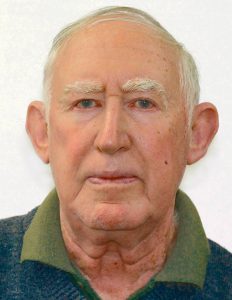
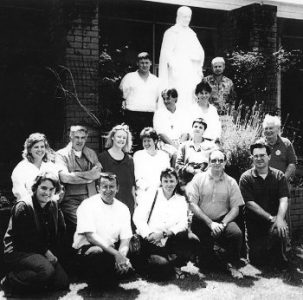
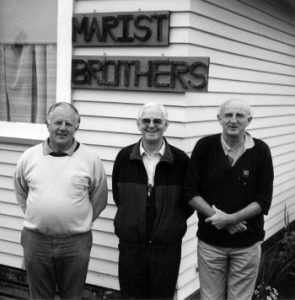
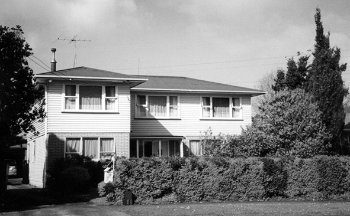
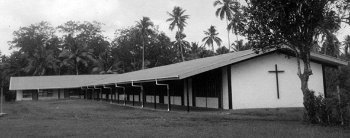
 Entries(RSS)
Entries(RSS)